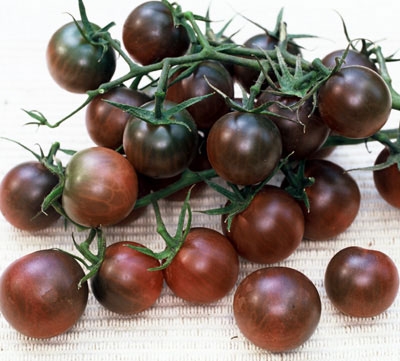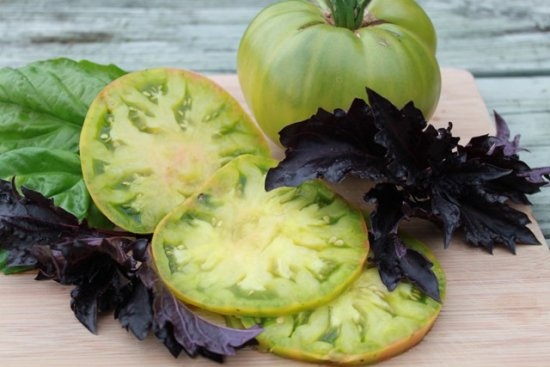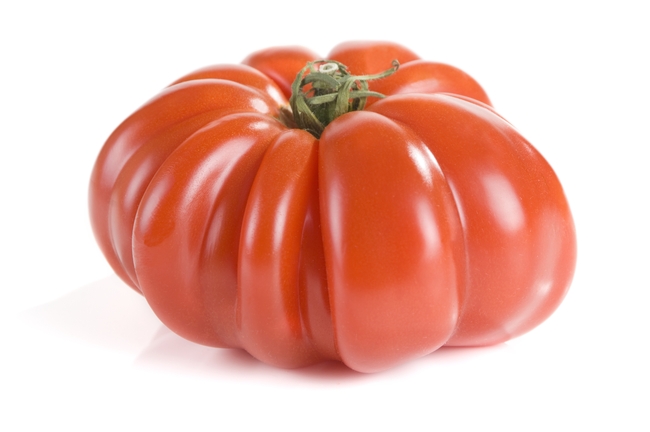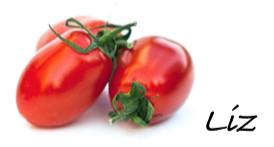By Liz Rottger
First discovered in the Andes more than two thousand years ago, the tomato was cultivated extensively by the Aztecs where it grew like weeds, year-round. Spanish explorers first took tomatoes to Europe in the sixteenth century. Initially, it was thought to be poisonous because it was a member of the nightshade family (Solanaceae), famous for its toxins. Early on, tomatoes were used only as table decorations. Italians were the first to discover the tomato's culinary prowess and introduce it into their cuisine. The earliest cookbook with tomato recipes was published in 1692 in Naples. Once it caught on, it spread across Europe and adapted again and again to the climate and soil of that specific region.
Tomatoes come in a dazzling spectrum of colors; belying that aphorism that ‘red' is synonymous with ‘tomato.' Colors range from black, purple, pink, green, orange, and even white to every shade of red imaginable. There are also spectacularly beautiful striped tomatoes like the striking Big Rainbow with its neon-red striping throughout its rich yellow flesh or Chocolate Stripes with its dark shoulders draped over a deep red. Each color has its own unique taste. Some are sweet and fruity; others have rich, complex flavors, acidic and tangy.
Today, there are literally hundreds of varieties of tomatoes whose names like Aunt Ruby's German Green, Black Sea Man, Caspian Pink, Nebraska Wedding, or Black Krim attest to their place of origin. There are tiny, bite-size cherries, colossal, one-to-two pound Hawaiian Pineapples, plum-shaped San Marzanos grown for tomato sauce and the beautiful, perfectly round Japanese heirloom, Mandarin Cross.
The word “heirloom” is difficult to define, but nurserymen have used it for decades to indicate varieties of plants and trees, which have a well-known and established provenance and breed true. Heirloom tomato varieties are by definition open-pollinated and their seeds can be collected from one year to the next with the same characteristics as the parent plant.
Many tomato varieties have been preserved for generations by home gardeners from their family gardens (Mortgage Lifter, Brandywine, San Marzano, etc.). Each year, they carefully selected and saved their most flavorful fruits in order to plant their seeds again the following spring. Some of these tomato varieties were even brought to America in a form of reverse-migration by immigrant families (Czech Bush, Azoychka, Eva Purple Ball, the Russian “Blacks,” etc.). Saving tomato seeds has preserved the genetic diversity of tomatoes.
There is no doubt that the tomato is the undisputed queen of the summer garden and nothing tastes better than homegrown!
PS. The Great Tomato Plant Sale is happening now! April 4th at Walnut Creek Our Garden and April 11th at Richmond - come find your new favorite tomato.



